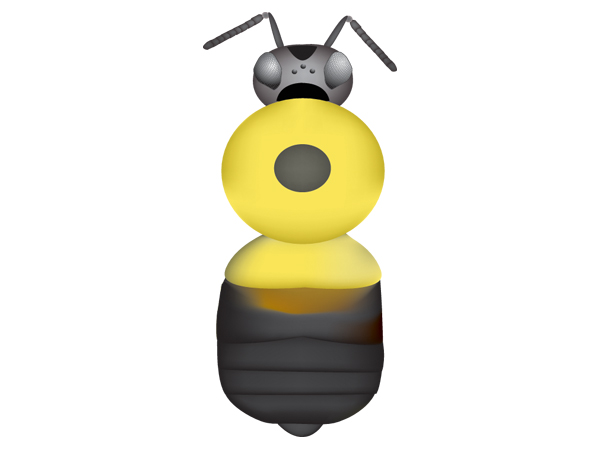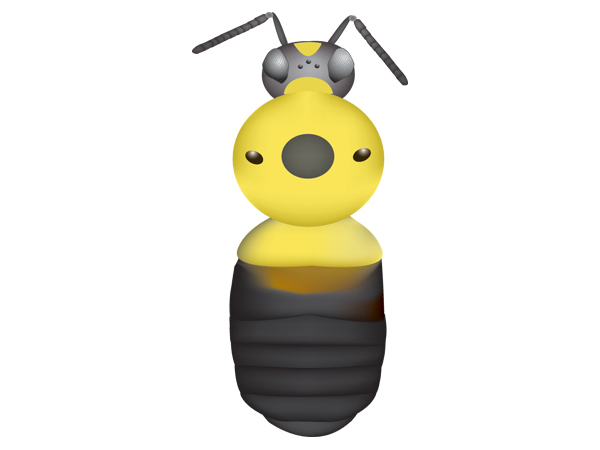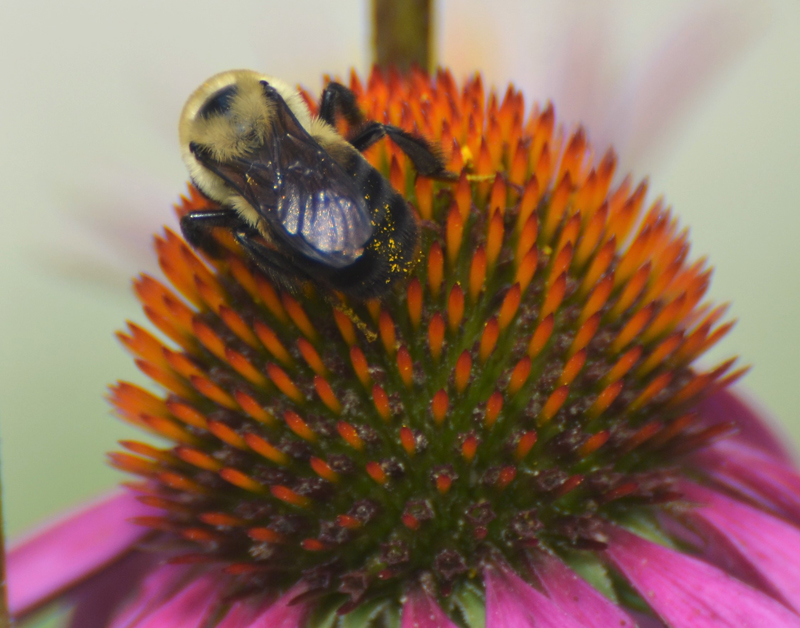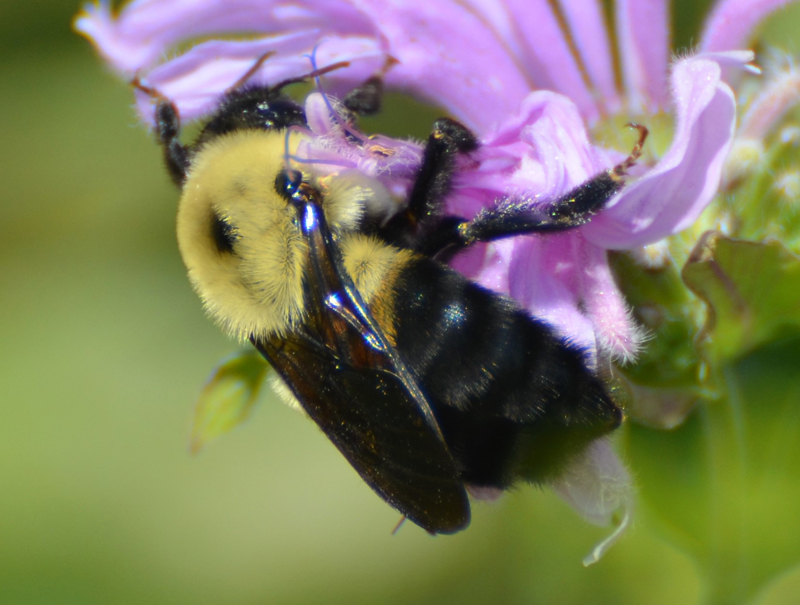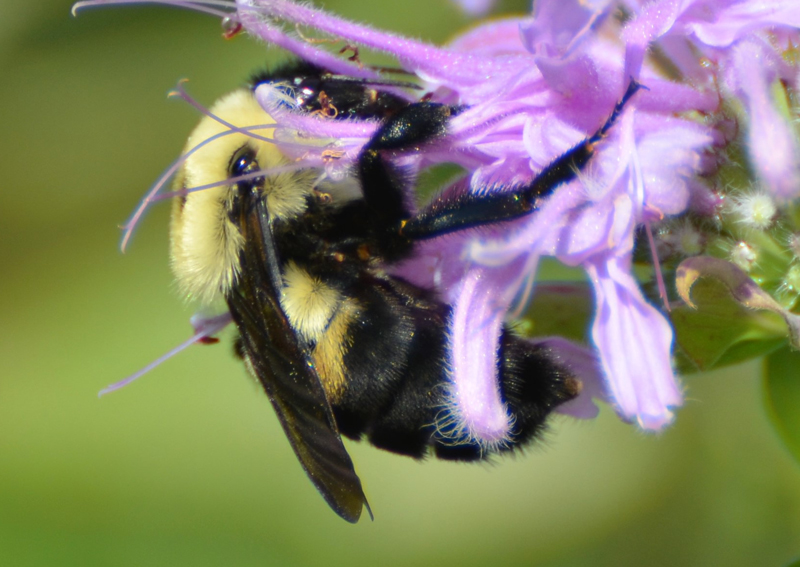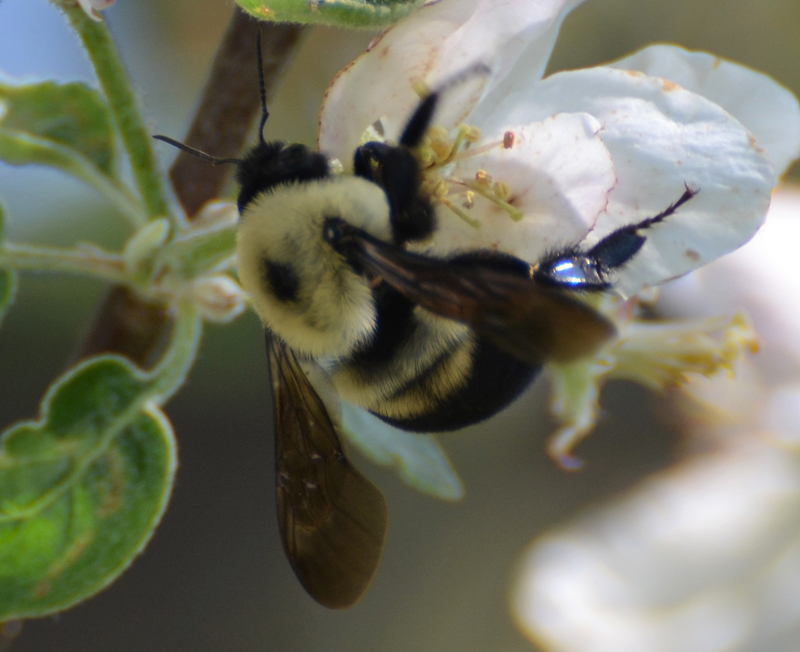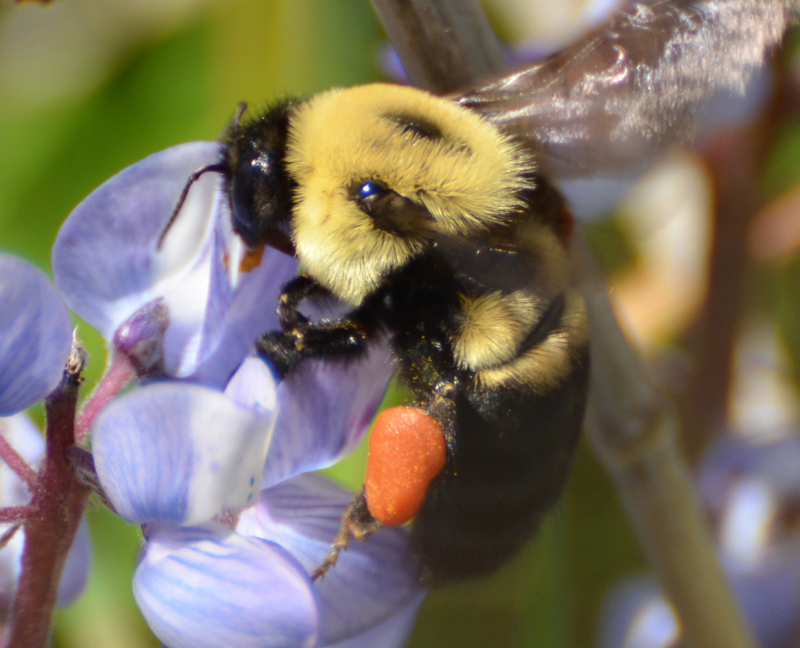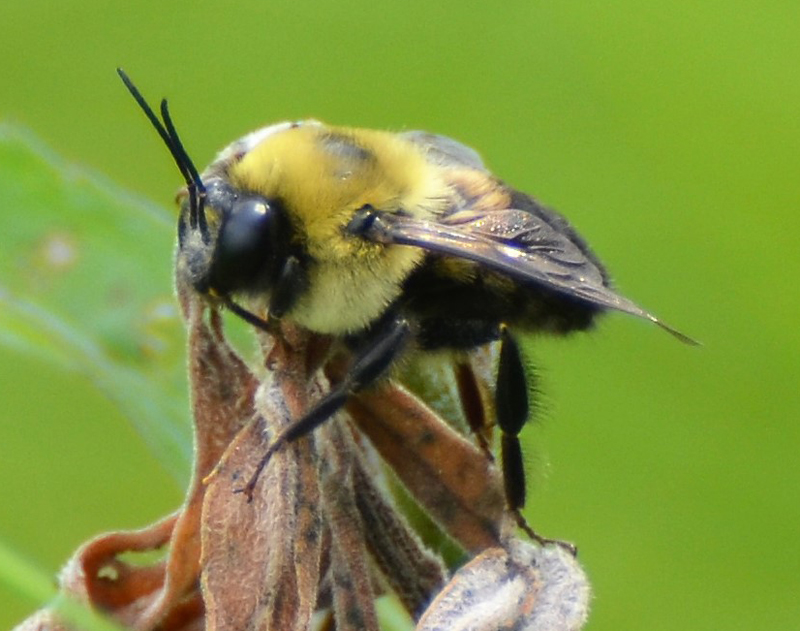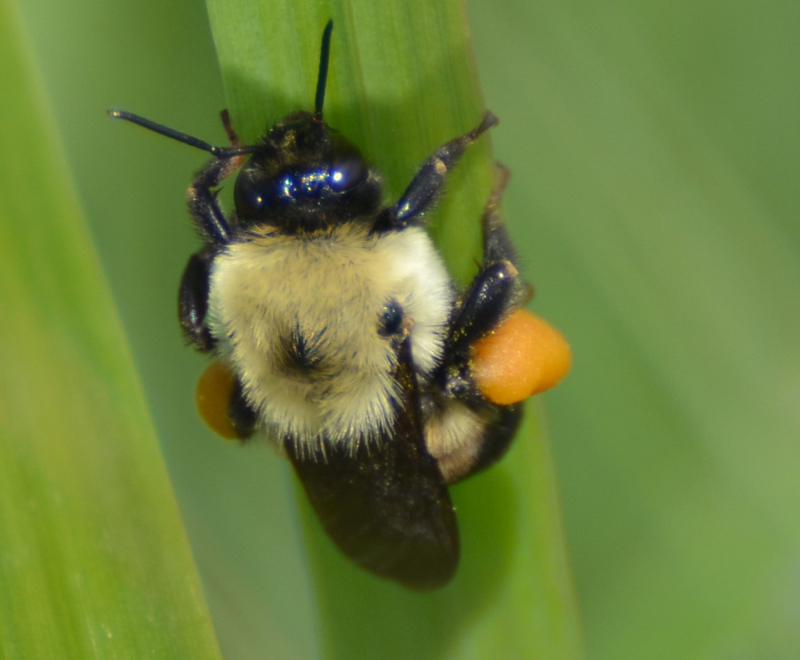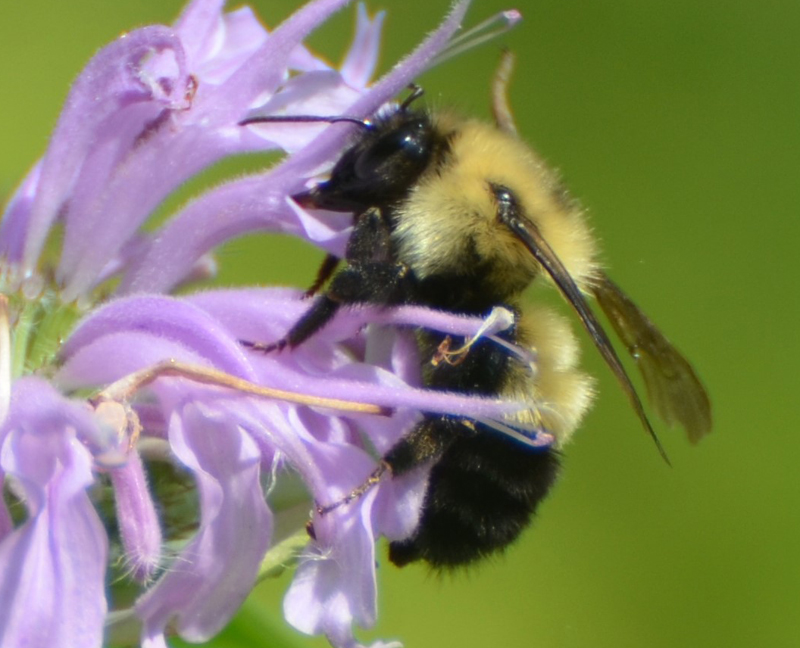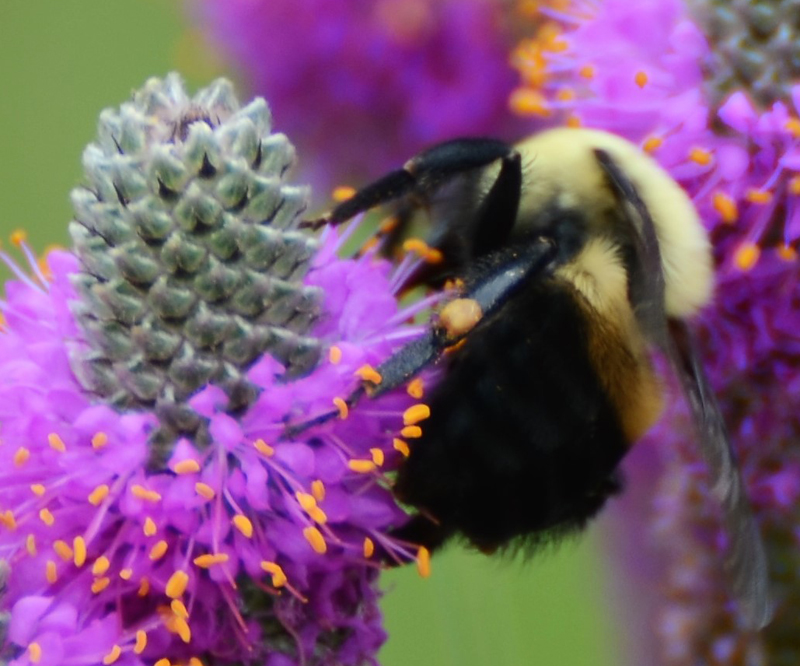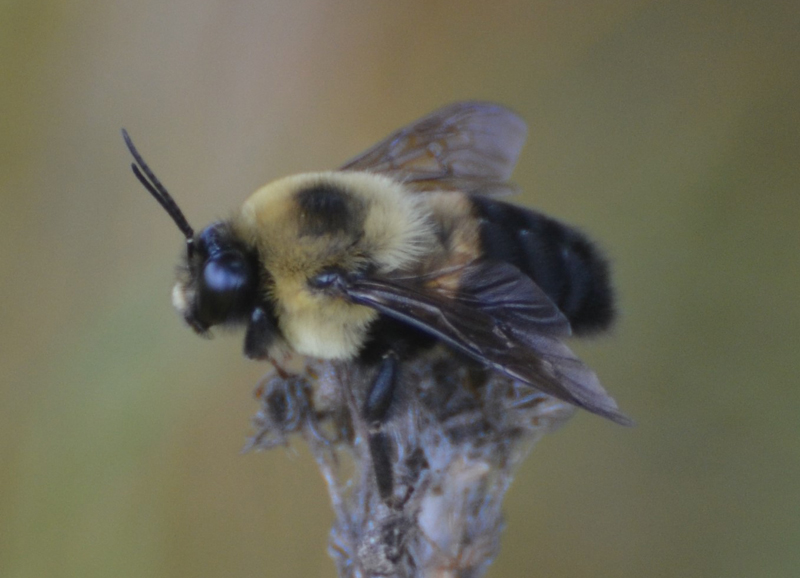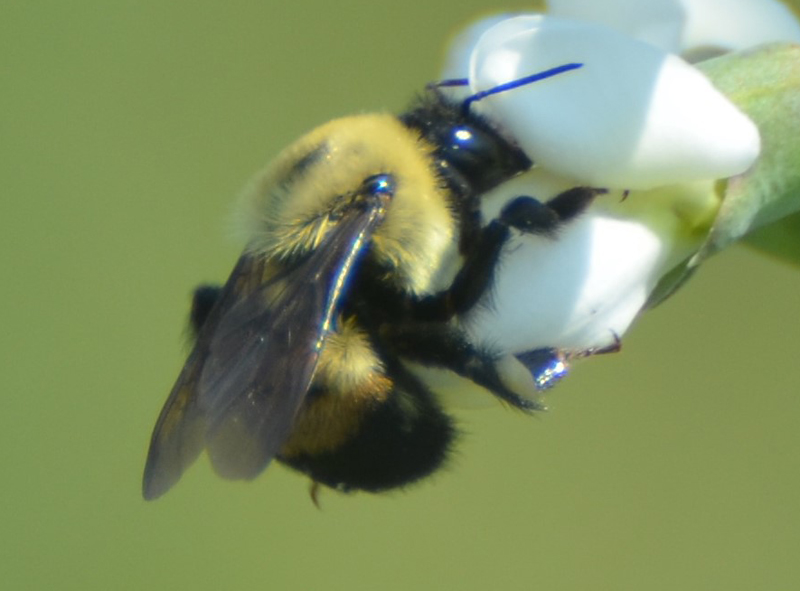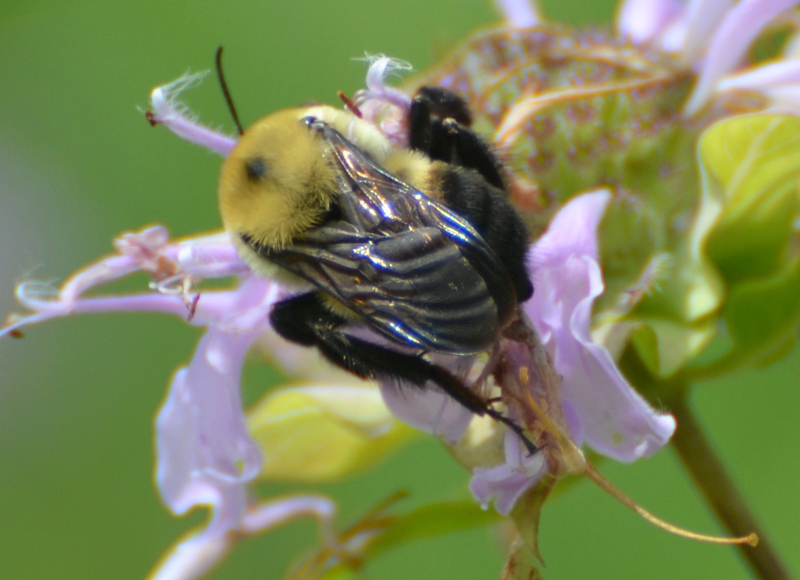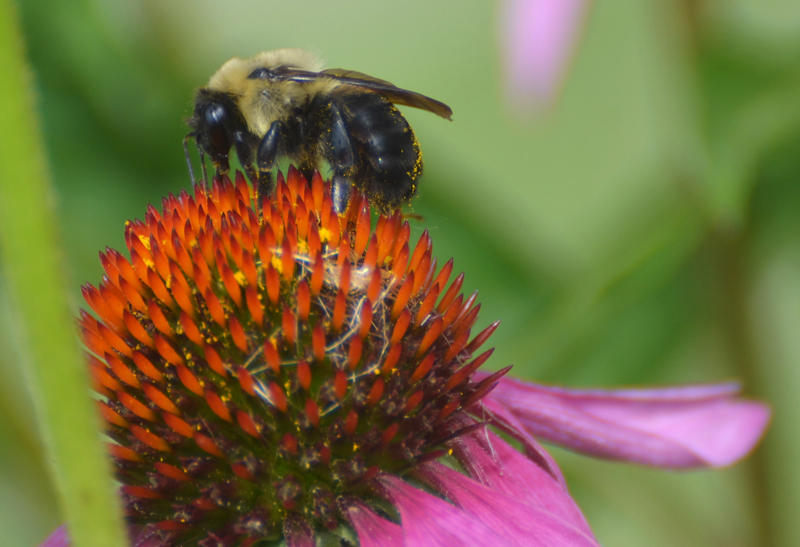
Status-Global/State:
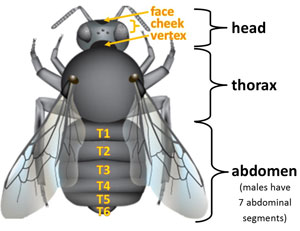
Identification:
- Worker – Face and vertex mostly black or intermixed. Thorax yellow often with a black spot. Abdominal segments T1 yellow, T2 brown half-moon surrounded by black, and T3-5 and T6 black.
- Queen/gyne – Similar to workers, but are larger and appear earlier in the season.
- Male – Similar to workers except with lighter face and vertex. Males have large eye.
- Other distinguishing features – Hair short and even and cheek/face short.
Similar Wisconsin Species:
Similar bumble bee species in Wisconsin are twospotted bumble bee (B. bimaculatus), rusty patched bumble bee (B. affinis), common eastern bumble bee (B. impatiens), southern plains bumble bee (B. fraternus), and redbelted bumble bee (B. rufocinctus) (Colla et al. 2011, Williams et al. 2014).
Description of Habitat/Range:
Known habitats include open fields, urban parks, gardens, wetlands, and prairies (Williams et al. 2014). Nests have been found on the ground surface (Colla et al. 2011, Williams et al. 2014).
Nectar Plants
The brownbelted bumble bee is a short-tongued species (Williams et al. 2014). Nectar plants include Asclepias (milkweeds), Cirsium (thistles), Coronilla, Dalea (prairie clover), Echinacea (purple coneflowers), Helianthus (sunflowers), Lythrum (loosestrifes), Melilotus (sweet clovers), Monarda (bee balm), Pontederia, Rhus (sumacs), Rudbeckia (eyed Susans/yellow coneflowers), Solidago (goldenrods), Trifolium (clovers), Verbena and Vicia (vetches) (Williams et al. 2014, Colla et al. 2011).
Data from verified B3 observations [updated 2/28/2024].
Flight Season:
In Wisconsin, observations have been reported between May and September. Range-wide, queens start emerging in May and enter diapause in September (Colla et al. 2011).
Literature Cited:
Colla, S., Richardson, L. and Williams, P. (2011) Bumble Bees of the Eastern United States. A product of the USDA Forest Service and the Pollinator Partnership with funding from the National Fish and Wildlife Foundation.
Hatfield, R., Jepsen, S., Thorp, R., Richardson, L. & Colla, S. 2015. Bombus griseocollis. The IUCN Red List of Threatened Species 2015: e.T44937645A46440221.
Williams, P.H., Thorp, R.W., Richardson, L.L. and Colla, S.R. (2014) The Bumble bees of North America: An Identification guide. Princeton University Press, Princeton.
